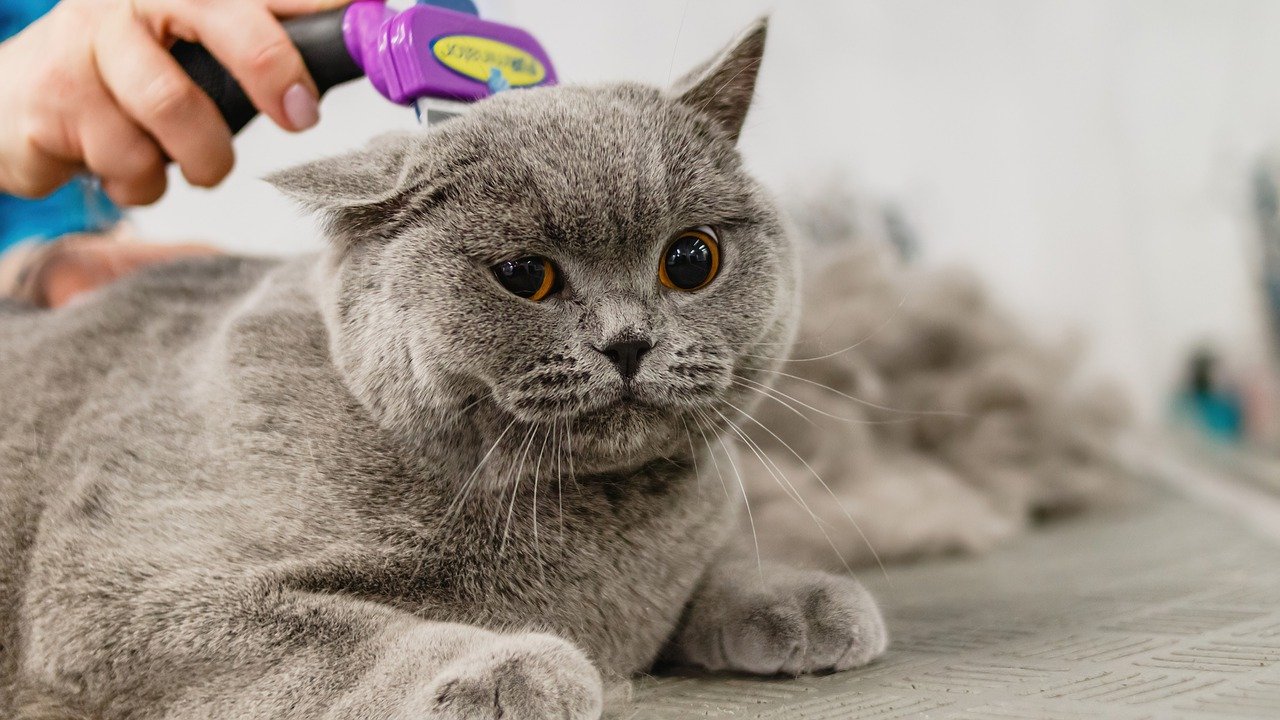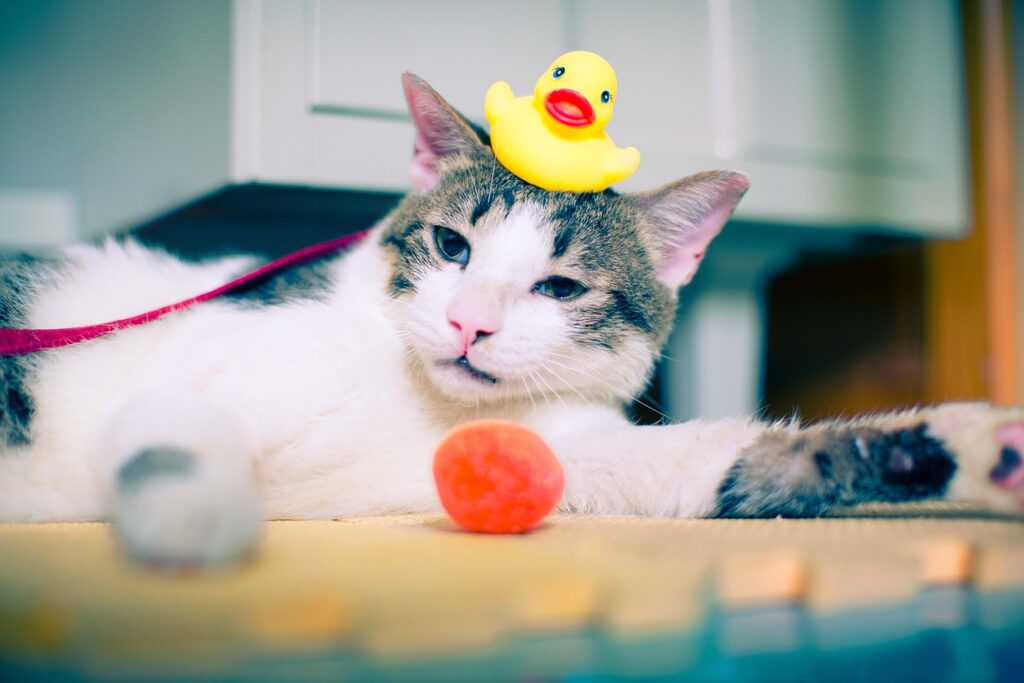Are you also wondering that “how often should I bathe my cat?”, well bathing and grooming are essential components of your cat’s general health and well-being.
You want to make sure their skin is healthy and radiant, just like you would for yourself. However, as you are aware, most cats dislike baths, to say the least. When you try to wrangle them into a bath, they may become aggressive or anxious. This can make bathing a cat difficult for any cat owner.
It’s easy to make a pool enjoyable for both you and your water-fearful buddy by adopting a regular practice and starting them early.
So, how often should you bathe a cat? Here’s what you need to know.
Table of Contents
Cat Bathing
Licking oneself is a natural way for cats to meet many of their haircare demands. Their rigorous daily maintenance keeps the need for a bath at bay. Cats are capable of removing most dirt from their coat, but their cleaning will not get rid of everything, nor will it make them smell any better.
A bath once every 4-6 weeks is recommended by the National Cat Groomers Institute of America.1 However, how often your cat should bathe will be determined by several things, including:
- Is it an indoor or an outdoor cat? Outdoor cats will require more baths than their counterparts, who live inside.
- What is the length of their coat and what kind is it? Naturally, cats with longer coats require more care. A hairless cat will still require a bath from time to time.
- Are they active? A more energetic cat will require more regular cleaning.
- Do they have any health problems, such as fleas or other cat skin issues? If your cat has an allergic reaction to the material, it may need additional baths.
Typically, an eye or nose inspection will determine whether your cat needs a wash.
“The general condition of your cat’s coat and skin are good indicators of its health,” says VCA Hospitals. A healthy coat should be glossy and smooth, while a healthy skin should be supple and transparent.”
Do Cats Need To Be Bathed?
Do cats require baths? Without a doubt, no. We all know that grooming their selves is something cats are great at. However, they should consider how much time they spend doing it. Their barbed tongues allow them to clean their coats quite well without the assistance of humans, thank you very much.
However, there are some circumstances where a wash with shampoo and water is required, no matter what your cat thinks. If you find external parasites, stubborn dirt (such as paint or sap), or smelly stuff in your cat’s fur, a bath will not suffice.
Keeping your cat’s long hair clean may be beyond her capability, regardless of her grooming abilities, if it’s long (yes, Persians), or if she has short hair. Hairless cats, on the other hand, such as Sphynx require regular baths to wash away body fluids that would otherwise be absorbed by their lack of hair.
Bacteria can grow on your cat’s skin, causing unpleasant odors and infections if left unchecked. There are several medical reasons why your cat may need a wash. Cats that are elderly, obese, or have mobility problems may have difficulties keeping clean (at least to feline standards). If your cat has a cat allergy, washing him/her once a week might help reduce allergen-aggravating cat dander. Of course, while this may make life easier for the allergy sufferer, we can’t say the same for the person bathing the cat. 😉
Step Wise Guide To Bathe Your Cat
If you’re preparing for a bath, follow these guidelines to make it less stressful for you and your feline companion:
Tread Lightly With Them At First
The last thing you want while bathing is a hyperactive, aggressive cat. You should try to reduce your cat’s energy levels with a game session before bringing them near water. Allow your cat to tire itself out.
Brushing Your Cat
Brushing your cat regularly is one of the most essential methods for assisting them with their grooming. This will not only cut down on the number of baths your cat needs, but will also remove much of the trash, dander, and loose hair before it enters the tub or sink. To maintain a healthy sheen in your cat.
Trim their nails if they are too long – The health of your cat’s paws and nails is also crucial to his or her general health and happiness. Trimming and maintaining their claws will assist them with all of their daily activities, preventing them from getting scratched.

Prepare Your Cat, Then Bathe Him
To keep water from entering your cat’s ears, place cotton balls in them and block the entrance. Put down a rubber mat in the washing area to prevent your cat from slipping.
Wash With Care
Although cats are afraid of getting damp, they especially despise being drenched. As a result, don’t spritz their face or fully immerse them in the water. Begin with one of their legs at a time to allow them to become used to the strange sensation. If your cat has an abscess or is burned, take extra precautions while washing their skin.
Use A Medicated Shampoo
Never apply human goods on your pets; they may contain chemicals that are safe for people but not for them. Always use a veterinarian-prescribed cat shampoo, such as Vetericyn FoamCare Pet Shampoo, or a pet shop’s recommended product. Vetericyn FoamCare Pet Shampoo is one of our favorites. The foam wand’s unique design ensures a smooth, comfortable wash for your dog. It beats rubbing noses and paws in water or cleaning them with detergent! FoamCare is a non-irritating, hypoallergenic pet shampoo that deodorizes, conditions, shines up, and relieves dry irritated skin.
Rinse Thoroughly
After you’ve massaged the shampoo in, rinse all of the soap deposits out with lukewarm water.
Dry – Remove the cotton balls from your cat’s ears, then dry off your cat’s face and body with a gentle towel.
Blow-Dry
On the lowest setting, dry your cat’s hair with a blow dryer while softly brushing it. They’ll be warm, dry, and comfortable as a result of this.
How to Groom Your Cat the Easy Way
Your cat uses natural grooming methods to clean itself. You may reduce the number of baths your cat requires by complementing this with routine brushing. Still, to be on the safe side, your cat should receive a bath at least once every two months.
Bathing your cat should not be seen as an unpleasant experience; with the appropriate suggestions and methods, you can keep its coat looking new and clean. When bathing your cat, use a pet shampoo that has been prescribed for the situation.
Vetericyn FoamCare is a safe, thorough cleanser and conditioner that allows you to clean, heal, and soothe your animal’s skin and fur with ease. It’s the ideal answer for glossy and healthy cat hair.

